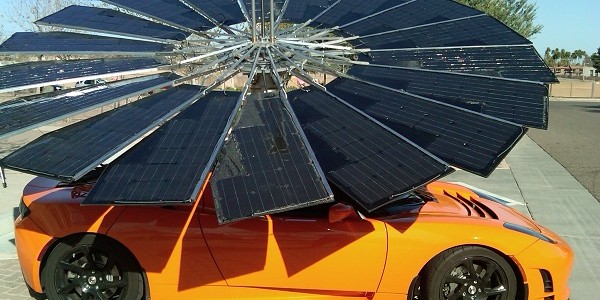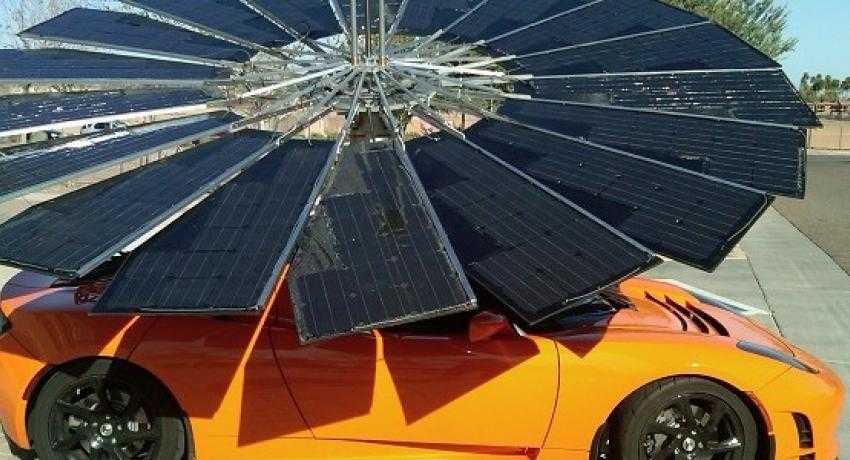Lotus design could make solar more accessible
 Arizona State University professor Joseph Hui is using one of nature’s most intelligent and beautiful designs to make solar energy more accessible, mobile and affordable.
Arizona State University professor Joseph Hui is using one of nature’s most intelligent and beautiful designs to make solar energy more accessible, mobile and affordable.
Hui’s Monarch Power has released its Lotus Mobile device – an 11-foot diameter 1.1-kilowatt mobile concentrated solar PV array that folds out like a flower with individual petals to collect the sun’s energy.
“It can be operational within minutes,” Hui said.
But he’s also preparing to launch a new Lotus Max, which will be slightly less mobile at 16 feet diameter and 2.4 kilowatts. He intended to raise funds for the new product on Kickstarter, but the crowd funding website rejected him, saying his project wasn’t large enough in scope.
“It’s a good thing, really,” he said. “I don’t need the money to build them. I just need to prove the market.”
He said he’s doing that in a grass roots campaign instead of through Kickstarter. This way people can put down $100 or $200 to reserve a solar power unit without paying the full $3,000 plus upfront.
The Lotus design accomplishes several tasks. The mobile version can fold out and mount anywhere within minutes. Hui has even set it atop his Tesla to charge the luxury electric car. The larger version can eliminate some soft costs for residential and commercial solar installations.
“It’s plug and play,” Hui said. “The whole device has the notion that you can almost do it yourself.”
Since the Lotus is a complete system minus the inverter, Hui said it’s conceivable that people could pour a concrete post in their yards, mount the device, get an inverter and hire an electrician to hook it all up. It might save a little money and would definitely save some time.
Both the Lotus Mobile and Max are solar tracking, which increases their energy output by about 30 percent, Hui said.
He is enamored with solar thermal technology and initially developed the design with thermal in mind, but said he will wait for that market to strengthen before diving into it.
“I decided to start with a PV versions because it’s more popular,” he said.
Aside from domestic use, Hui said he sees a lot of opportunity for the Lotus in developing areas. The smaller version could provide enough power for a small village in some communities.
He’s also looking at deploying the Lotus with emergency responders. In addition to providing energy, he said the structure of the Lotus allows it to function as a tent-like shelter as well.
He said he will focus on three primary markets to start: emergency response, the developing world and electric vehicle charging.




